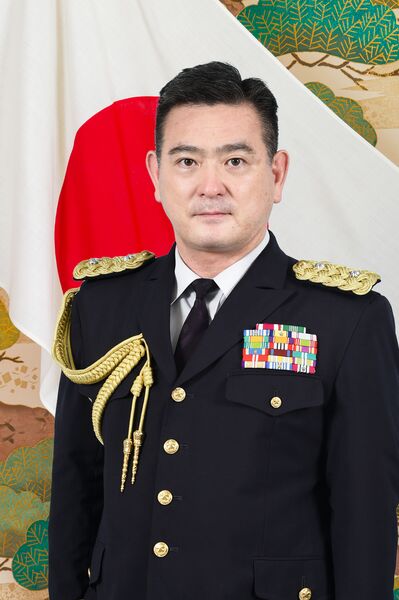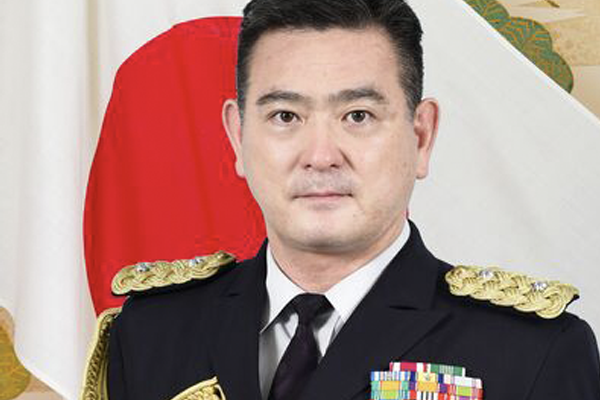- About
- Intara
- Capabilities
- Advisory
- Resources
- News
- Store
- Home
- News
- Major General Yoshiki Adachi, Director General, C4 Systems & Intelligence Department, Ground Staff Office, Japan Ground Self-Defense Force
17 March 2022
Major General Yoshiki Adachi, Director General, C4 Systems & Intelligence Department, Ground Staff Office, Japan Ground Self-Defense Force
by Jon Grevatt


Major General Yoshiki Adachi, Director General, C4 Systems & Intelligence Department, Ground Staff Office, Japan Ground Self-Defense Force. (Japan Ground Self-Defense Force)
Changes in Japan's security environment are prompting the Japan Ground Self-Defense Force (JGSDF) to modernise its capabilities across cyber and electromagnetics domains.
Major General Yoshiki Adachi, Director General of the C4I Department at the JGSDF's Ground Staff Office and former military attaché to the United States – who has responsibility for shaping the JGSDF's intelligence and C4ISR capabilities – told Janes that the JGSDF is pursuing numerous new projects to advance its future capabilities in the two sectors.
“Changes in the balance of power are accelerating and becoming more complex. In addition, uncertainty over the existing order is increasing. Interstate competition occurs on a continuous basis,” said Maj Gen Adachi in reference to Japan's security environment.
“Secondly, technological progress is about to change fundamentally how security should be managed… Contemporary warfare increasingly features capabilities combined across all domains. Not only land, sea, and air, but also new domains, including space, cyberspace, and the electromagnetic spectrum.”
To support advances in capabilities across the Japan Self-Defense Forces (JSDF), information and communications networks that leverage cyberspace “form a foundation for the JSDF's activities in various domains”, Maj Gen Adachi said. “The JSDF will strengthen its cyber-defence capability, including the capability to disrupt the opponent's use of cyberspace for attacks against Japan,” he added.
Maj Gen Adachi said the JSDF plans to form a new joint unit, the JSDF Cyber Defense Command, to “drastically strengthen cyber-defence capabilities”. “The JGSDF will support this effort by providing a large number of its personnel to the command,” he said.
Maj Gen Adachi also said the JGSDF established a new Cyber Protection Unit at the end of fiscal year (FY) 2020 to “defend the JGSDF's network”. “The unit has strengthened functions of analysis of cyber-attacks, and to evaluate the tolerance of JGSDF information systems, which… [support] each regional army,” he said.
He added that in addition to undertaking a range of cyber-defence exercises, the JGSDF has enhanced its related education and training regimes. “At the end of FY 2020, the JGSDF also set up a Cyber Instructors Office in the JGSDF's Signal School to provide cyber-related education to the Japan Maritime Self-Defense Force and Japan Air Self-Defense Force as well as to itself. It also improved a system to provide cyber capabilities in the JGSDF High Technical School.”
Turning to the electromagnetic domain, Maj Gen Adachi said such capabilities are recognised by the JGSDF as a “front-line offence-defence dynamic in today's warfare”.
“It is necessary to strengthen four electromagnetic capabilities: to manage the use of electromagnetic waves; to collect and analyse electromagnetic waves; to disable competitors' use of electromagnetic waves; and to ensure own electromagnetic waves by reducing competitors' disturbance,” he added.
Maj Gen Adachi said, “In an effort to strengthen the capability to manage electromagnetic waves, the JGSDF provides functions to the command and control system of JGSDF to support the optimisation of frequency allocation within the JGSDF, and plans to improve capability by establishing connections with the command and control system of the Joint Staff. In addition, the JGSDF has established electric warfare units as a capability to collect and analyse competitors' electromagnetic waves as well as to disable them. Also, the research and development of high-power microwaves and lasers is proceeding.”
In ground combat scenarios, “various electromagnetic waves will be used in the operational environment by ourselves, competitors, private sectors, and US forces. Under these circumstances, and to gain an advantage in warfare by using the electromagnetic spectrum proactively and effectively, it is necessary to build capabilities to manage the electromagnetic spectrum by co-ordinating wave frequencies and their status of use, and appropriately allocating frequency resources to units”, Maj Gen Adachi said.
The JGSDF is also committed to leveraging electromagnetics to support advances in firepower capability – including ground combat operations – by collecting, analysing, and sharing information about the uses of electromagnetic waves in both peacetime and contingency operations, and in disabling a rival's use of similar technologies, he added.
The effort to enhance electromagnetic capabilities is also supported by the recent establishment of various JGSDF units, including the 301st Electric Warfare Unit, which is equipped with a truck-mounted Network Electronic Warfare System (NEWS), and the planned establishment of the Electronic Operations Unit, which will be a subordinate unit under the Ground Component Command, and is expected to be launched before the end of FY 2021 in March 2022, he said.
“The electromagnetic spectrum is used for command and communication, and monitoring and surveillance. With the development of these technologies, its use has expanded in range and purpose, and it is now recognised as a major operational domain situated on the front line of the offense-defence dynamic,” Maj Gen Adachi said.
“Also, the electromagnetic spectrum is essential for modern equipment. Strengthening information collection and analysis capabilities related to the capability is increasing. For this purpose, the JGSDF is introducing equipment in the electromagnetic domain and is participating in joint electric warfare training to strengthen operational capability in joint operations,” he added. Such JGSDF training in the electromagnetic domain is also being carried out in partnership with the US forces, he said.
Looking forward, Maj Gen Adachi said that capabilities across the cyber and electromagnetic domains will also be crucial for the JSDF in developing a multidomain defence force, which is a key requirement under Japan's defence policies, including its National Defense Program Guidelines (NDPG) and Mid-Term Defense Program. Japan's Prime Minister Fumio Kishida confirmed in January 2022 that these policies will be reviewed and updated in about a year.
“As the security environment surrounding Japan is becoming more severe and uncertain at a remarkably fast rate, the current NDPG will integrate capabilities across new domains – including space, cyber, and the electromagnetic spectrum – while also strengthening capabilities in individual domains,” Maj Gen Adachi said.
“To strengthen Japan's defence posture, capabilities in all domains, including space, cyber, and the electromagnetic spectrum, will be integrated to build a multidomain defence force with capabilities to respond to requirements from peacetime to armed contingencies,” he added.
Changes in Japan's security environment are prompting the Japan Ground Self-Defense Force (JGSDF) to...
 Details
Details 